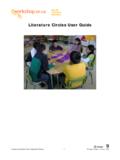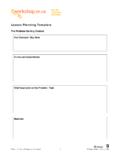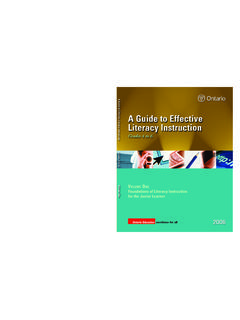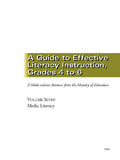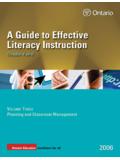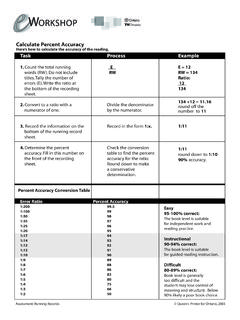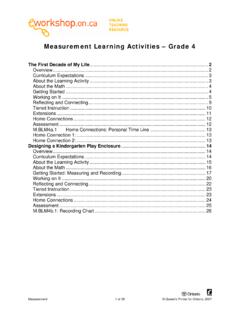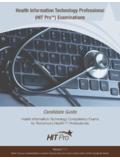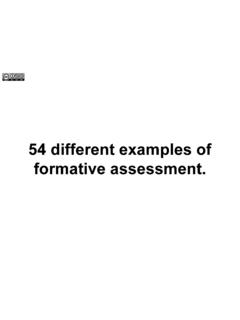Transcription of Using Running Records to Inform - eWorkshop
1 Using Running Records to Inform TeachingUse the time immediately after administering Running record to teach your student. Ask yourself:"What is the most important teaching point that can help this student progress right now?"If you identify similar reading difficulties or patterns amongst two or more students, then address the issue in small or large group I see in the student s Running recordUses 1 or 2 source(s)of informationUses Meaningand Structureand neglects VisualDoes not addresspunctuation and text featuresApplies substitutions,omissions,insertionsNeglec ts meaning(may focus primarilyon visual cues)What I can do Direct teaching to the other sources of information in Guided Reading and Shared Reading through teacher prompts:"Does it make sense?"(direct to meaning)"Does it sound right?"(focus attention on structure)"Does it look right?
2 "(focus attention on visualeues) Encourage the student to check an attempt :"It looks like come, but does that sound right?" (structure) Direct teaching and prompts to focus on visual information Teach effective ways to solve new words (such as chunking, initial sound,repeating and attempting the new word) Model during Read Aloud and writing sessions Teach during Shared Reading and writing activities Provide opportunities to practise in Guided Reading Emphasize punctuation with texts that the student knows well Emphasize attention to visual information:"It makes sense but look at the first letter." "It sounds right but look at the end of the word." Provide comprehension strategies and prompts for meaningless errors :"You Does that make sense?" Provide direct teaching:"Good readers think about what they are reading.
3 " Encourage the student to reread something when it is unclear or doesn t make sense Encourage the student to predict and check what is happening Teach pre-reading comprehension strategies like predicting, taking a picturewalk, questioning and making connections during Shared Reading Practice strategies during Guided Reading Assessment: Running Records Queen's Printer for Ontario, 2003 What I see in the student s Running recordRarely self-correctsReads slowly word for wordStruggles with high-frequency wordsInvents text (early stages)What I can do Teach self-monitoring (checking that the words read make sense,sound right and look right) Provide checking strategies such as re-reading, checking the picture and confirming visual information:"You Does that sound right?""Look at the picture.""Try this part again.
4 Does that match?" Use Guided and Shared Reading sessions to model and prompt for checking strategies Read familiar books with the student, focusing on fluency, not on decoding"Make it sound smooth, like talking." Model reading with phrasing and fluency Prompt during Guided Reading and Shared Reading :"Make it sound like talking.""Let s try smooth reading." Use choral reading Provide the student with books on audiotape Pair the student with a fluent reader Tape the student reading, then play back the tape Encourage reading aloud in shared writing experiences Find books that lend themselves to fluent reading (patterned text, songbooks, rhymes) Choose books that hold a lot of interest for the student Create word banks and a word wall of high frequency words Encourage the student to use the words, sort them and refer to them Select texts that include the high-frequency words.
5 Before reading the text,look at the word(s) with which the student has trouble. Use magnetic letters,little cards or a whiteboard. Then find the word(s) in the text before readingthe whole book. Say,"Find 'is' . Good, that says 'He ' " Emphasize high-frequency words often, such as during shared writingand when working with magnetic letters Prompt the student to use a finger as a 1:1guide when reading, and say :"Point to the that match?Did you have enough words?Did you run out of words?"Assessment: Running Records Queen's Printer for Ontario, 2003
